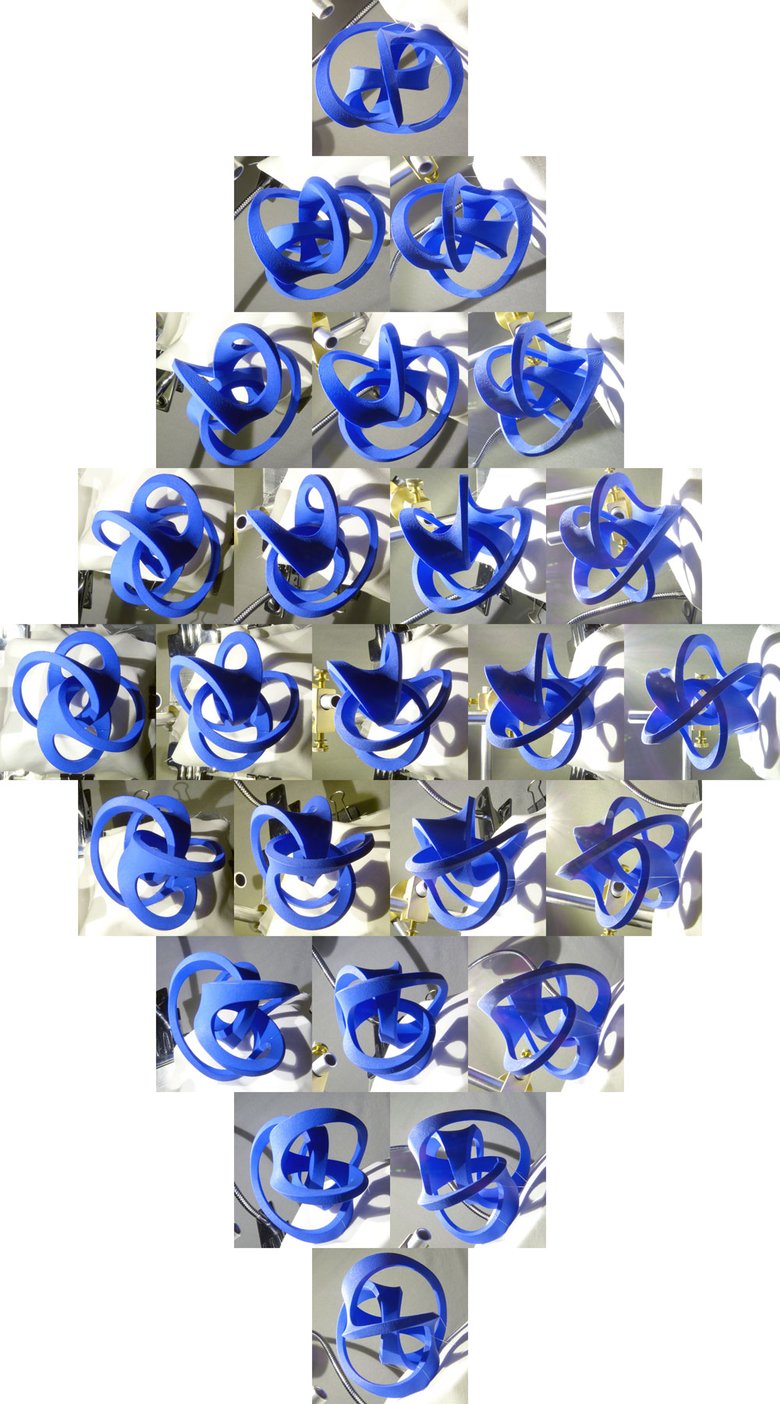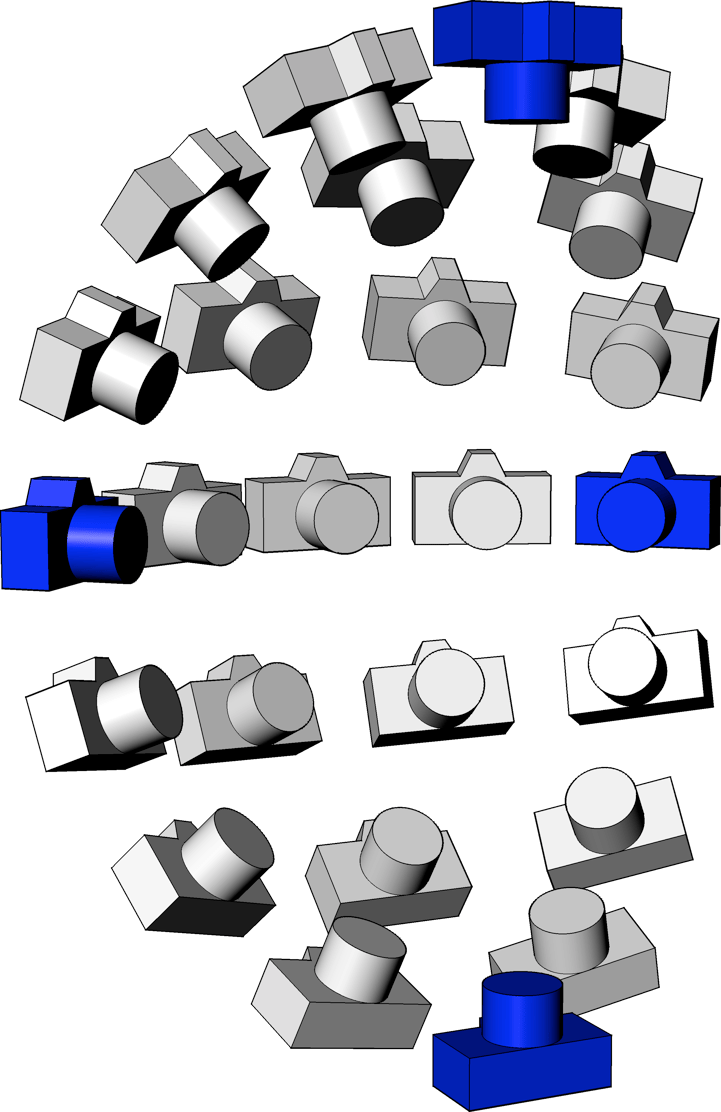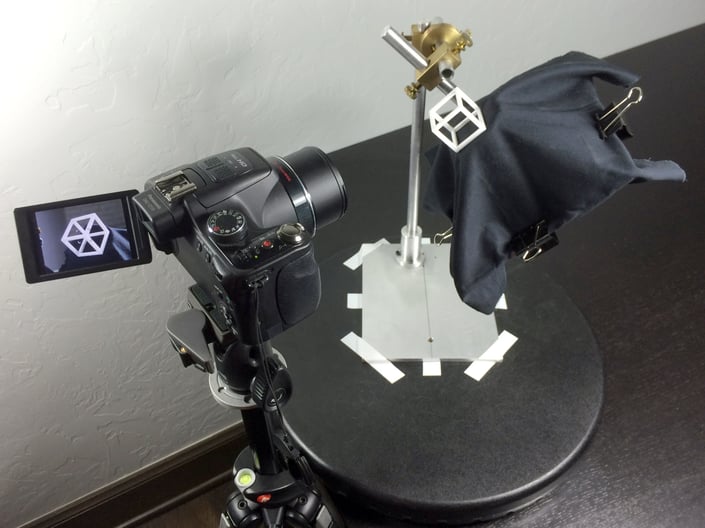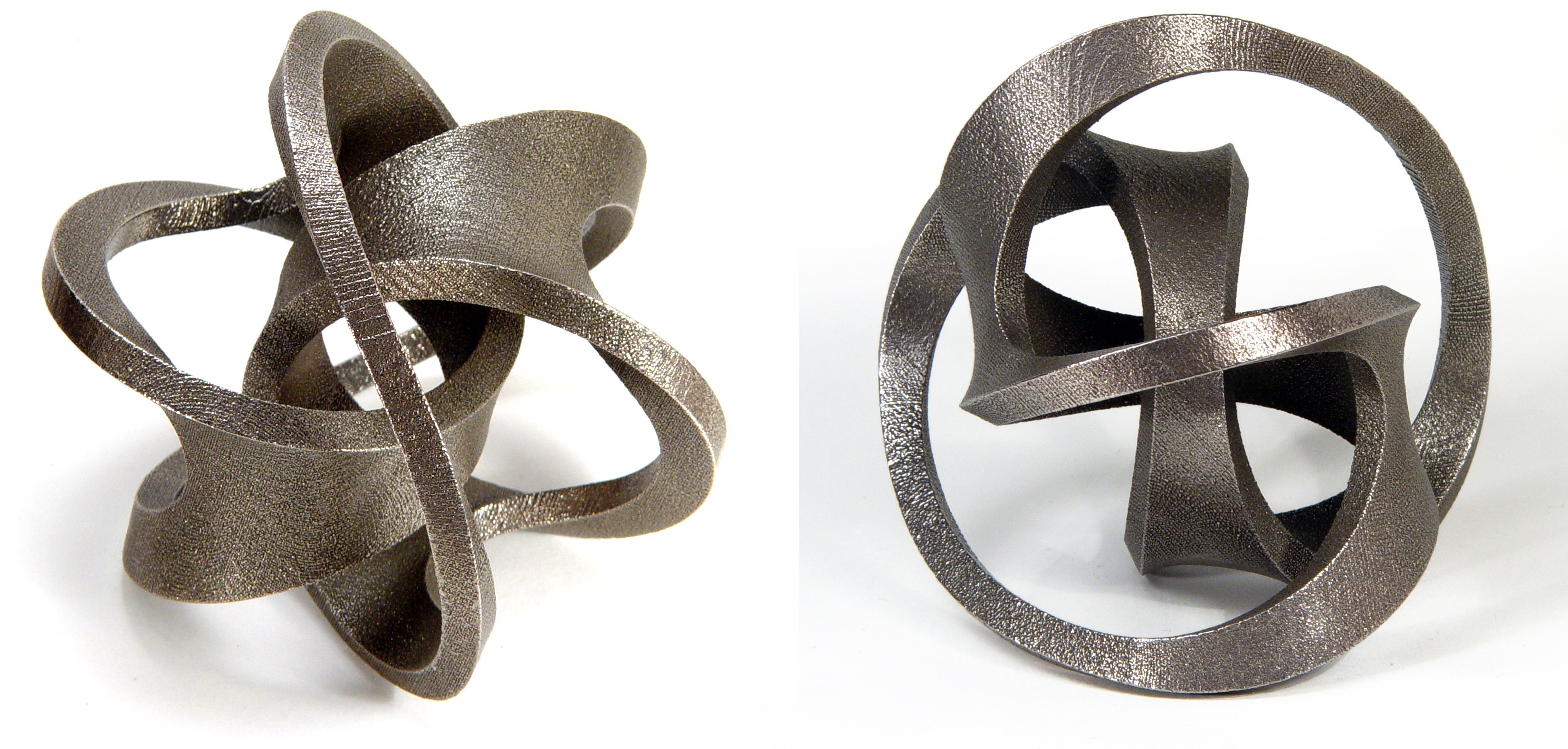
Henry Segerman’s new book Visualizing Mathematics with 3D Printing provides non-mathematicians with exciting new ways to understand complex mathematical shapes. Segerman’s easy-to-follow book and companion website show how we can use 3D prints to gain a tactile awareness of these objects and use our full stereoscopic vision to understand them better than we ever have. In this excerpt from the chapter on symmetry, Segerman explains what we learn when we look at Bathsheba Grossman’s beautiful and symmetric sculpture “Soliton” from dozens of angles — the only way to sufficiently capture the complexity (and artistry) of the form.
The picture above shows two photographs of Soliton, a sculpture by mathematical artist Bathsheba Grossman.
This is a difficult object to comprehend from a couple of photographs. Sinuous curves twist around each other in a complicated, but obviously symmetrical way. Rotation by half a turn is a symmetry for each of these views. But it isn’t so easy to see how these two views are related to each other, or even that they are photographs of the same object. With a few more viewpoints of the same sculpture however, we can see how they are connected. See the picture below. The first view shown in the picture above is at the far right, and the second is at both the top and the bottom.

25 unique views of “Soliton”
Let’s think of the sculpture sitting at the center of a sphere of possible directions to take a photograph from. We get a panel of possible views: a quarter of the entire sphere, like the panel of a four-panel beach ball. The picture below shows camera positions evenly spaced out over one of these panels — photographs from these positions make up the array of images above.

An illustration of the camera’s positions
Some of the photographs around the edges are repeats: they show the same view as each other. The pair of photographs above and below the rightmost photograph in the figure are the same as each other, as are the pair two above and two below, and so on. In fact the whole boundary edge from the rightmost point to the top is the same as the edge from the rightmost point to the bottom. The same is true of the two edges above and below the leftmost edge. This tells us how to cover the rest of the sphere of possible photographs: we can do this with a total of four copies of the panel, tiling the sphere so that the photographs we see along the edges match up.
—–
The rest of this chapter goes on to investigate and catalogue the other ways in which things can be symmetrical, and show more beautiful symmetric sculptures by various artists.
In case you were wondering, I took the grid of photographs using a rig that allows me to (relatively) precisely control the angle that the camera sees the cube from. Then there was some surprisingly tricky math and programming to generate the array of photographs!

The camera rig Segerman devised
For more, pick up a copy of Visualizing Mathematics with 3D Printing. All of the models discussed in the book are available on Shapeways, many from Segerman’s shop, with the rest linked to from the book’s companion site. We’re in awe of the work that mathematicians and designers like Henry are contributing to the Shapeways community — and how that work is advancing our understanding of mathematical and scientific concepts. Are you working on a project you’d like us to share on the blog? Make sure to get in touch, whether in the comments below or at community@shapeways.com.




Highly recommended! I have a copy of the book. It has great photos of 3D-printed models, teaching a lot about geometry.
Oskar